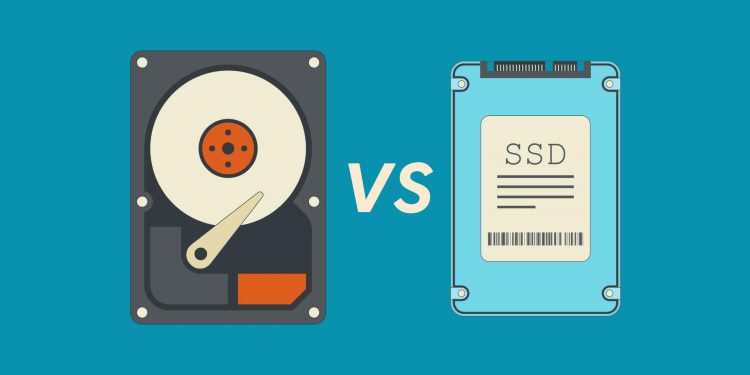I’m typically someone who stays on the bleeding edge of electronics, and have been building my own computers for decades, but when it came to hard drives I always stuck with the tried and true spinning hard drive (HDD).
I recently upgraded to a solid state drive (SDD), and I’m sure you’re asking “Is a solid state drive really worth the extra price?”. Well, the answer is a resounding yes. Let me tell you why, and introduce the basics of solid state drives.
SDD vs HDD
For as long as most people can remember, myself included, the spinning hard drive composed of a stack of platters has been standard, must have computing equipment. Data is stored on the platters and retrieved by a read/write head – at least until one of the platters is damaged.
Solid state drives work on a different principle entirely. Data on solid state drives is stored in block, and rather than being retrieved by a read/write head, your system simply queries the hard drive and gets its data returned. Just like that. Quick, efficient, and with no moving parts.
Solid State Drive Performance
Since there is no rotating disk or movable head and arm combination required to get your data to you, the retrieval process is much quicker. The most obvious performance gains to an everyday user will be:
- Quicker opening of applications
- Faster moving, copying, and deleting of files
- Lowered system boot times
This is achieved by lowering what is called ‘seek time’, or the time it takes for the hard drive to ‘seek’ the data you have requested. Lower seek time means noticeably better performance, especially if your dealing with big data.
Picking a Solid State Drive
There are a few things you need to look for when buying a SSD:
- High maximum read and write speeds – these speeds indicate how quickly you can access and store data to your new hard drive.
- Multi-Level Cell (MLC) flash memory – of the two types, Single-Level Cell (SLC) and MLC, Multi-Level Cell memory is much cheaper, although it comes with a higher error rate.
- Error Correcting Code (ECC) memory – ECC can help to find and repair errors. This will help combat the increased error rate of a MLC solid state drive.
- SATA III – SATA III supports 6 Gbps data transfers, twice as fast as SATA II. You will need to make sure your computer is also SATA III capable.
The last, and most helpful, thing you need to do before buying a solid state drive is to check reviews from reputable sources such as amazon, or maybe ask some friends who have solid state drives what brands they recommend. If you follow these guidelines and check reviews, you will be completely satisfied with your new SSD.
Installing and Using Your New Solid State Drive
Most HDD drives in todays home computing market are 500GB to 1 TB, I myself have one of 2 TB. The price point of solid state drives limited me to purchasing a 240 GB drive. How did I deal with the reduction in space, you ask? Simple.
Install my operating system and some applications on the SSD, and leave my data on my classic spinning platter hard disk. This gave me the maximum benefit for the cost, my operating system, applications and boot process are now lightning fast. I still have my 2 TB of storage as well, in reality more than before since there is no operating system on the old HDD. So, go head down to your favorite store or website, and I hope you like your new solid state drive as much as I like mine!







